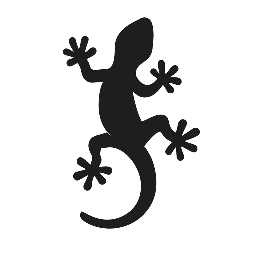As pet owners, we hope for the best but should always prepare for the worst. Emergencies—a sudden injury, an unexpected power outage, or the first subtle signs of illness—rarely happen at a convenient time. While nothing can replace the expertise of a qualified exotic vet, having a well-stocked first-aid kit on hand can make a world of difference in managing a minor issue or stabilizing your bearded dragon for safe transport to the clinic.
Think of this kit like the one you have for yourself. It’s for dealing with small scrapes, minor issues, and being prepared, not for performing complex medical procedures. Assembling these items now can give you invaluable peace of mind later.
The Most Important Item: A Vet’s Phone Number
Before we dive into the physical items, let’s be crystal clear: This first-aid kit is for temporary, minor aid and stabilization ONLY. It is NOT a substitute for professional veterinary care.
The number one item in your emergency kit should be a card with the name, phone number, and address of your trusted exotic reptile veterinarian, along with the contact info for the nearest 24/7 emergency animal hospital that treats exotics. When in doubt, always call your vet first.
The Checklist: Assembling Your Dragon’s Kit
Gather these items and store them together in a clearly labeled box or container.
Category 1: Wound Care & Minor Injuries
For small cuts from cage decor, scrapes, or a nail trimmed too short.
- Veterinary Antiseptic: A bottle of Povidone-Iodine or Betadine. CRITICAL: This must be diluted with water to the color of weak tea before use. Never use it full strength.
- Antibiotic Ointment: A tube of Original Neosporin. It is extremely important to use the original formula WITHOUT any added pain relievers (e.g., pramoxine hydrochloride), as these can be toxic to reptiles.
- Styptic Powder or Cornstarch: To quickly stop bleeding from a nail that has been cut too short.
- Sterile Saline Solution: The same kind used for contact lenses. Perfect for flushing debris from an eye or gently cleaning a wound.
- Applicators: A supply of cotton balls, Q-tips, and sterile gauze pads for cleaning and applying ointments.
Category 2: Dehydration & Nutrition Support
For when your dragon is lethargic, not eating, or showing signs of dehydration under vet guidance.
- Electrolytes: Unflavored Pedialyte or a reptile-specific product like Zoo Med’s Reptile Electrolyte Soak. An electrolyte bath can help rehydrate a sluggish dragon.
- Feeding/Watering Syringe: A small 1mL or 3mL plastic syringe (NO NEEDLE). Ideal for dripping water onto your dragon’s snout to encourage drinking or for administering liquid food if prescribed by a vet.
- Critical Care Food: A powdered “critical care” formula like Oxbow Carnivore Care or Repashy Grub Pie. This should only be used to supplement a sick dragon that isn’t eating after you have consulted your vet.
- Digital Kitchen Scale: A small scale that measures in grams is one of the best health monitoring tools you can own. Weekly weigh-ins can help you spot weight loss, often the first sign of a health problem.
Category 3: Tools & Essential Supplies
General items that are invaluable in a variety of situations.
- A Small Tub: A shoebox-sized plastic container to use for soaking or as a temporary “hospital” enclosure.
- Emergency Heat Source: Several disposable reptile heat packs (the kind you shake to activate). DO NOT use normal handwarmers made for humans, they get too hot too fast. Use a product made specifically for reptiles, such as UniHeat. Some are rated to last up to 72 hours. IMPORTANT: During a power outage or a cold car ride to the vet, activate a hand warmer and wrap it in a thick towel. Place it on the outside of the transport carrier. NEVER place a hand warmer in direct contact with your pet, as it will cause severe burns. If you are using a heat pack because of a power outage, immediately stop feeding your dragon. Without a proper basking area your beardy will not be able to digest their food and it will rot inside them, causing serious illness or death.
- Soft Towels: A few small, clean towels for handling, transport, or wrapping your dragon.
- Tweezers: For removing a splinter or a stubborn piece of stuck shed.
- Magnifying Glass: To get a closer look at a potential wound or parasite.
When to Use Your Kit: A Quick Guide
- Scenario: Bleeding Nail -> Dip the nail into styptic powder or cornstarch to stop the bleeding.
- Scenario: Minor Scrape on a Limb -> Gently clean the area with your diluted Betadine solution on a Q-tip, let it air dry, and apply a very thin layer of Original Neosporin. Monitor the wound for any signs of infection.
- Scenario: Power Outage -> Move your dragon to its transport carrier. Activate a hand warmer, wrap it in a towel, and place it outside the carrier to provide ambient warmth.
- Scenario: Sudden Lethargy -> While you are on the phone with your vet, you can place your dragon in a shallow, warm electrolyte soak.
Here in the Midwest, we know that summer storms or winter ice can lead to unexpected power outages. Being prepared isn’t about panic; it’s about responsibility. Taking an hour to assemble this kit is one of the best things you can do for your bearded dragon and your own peace of mind.

Leave a Reply